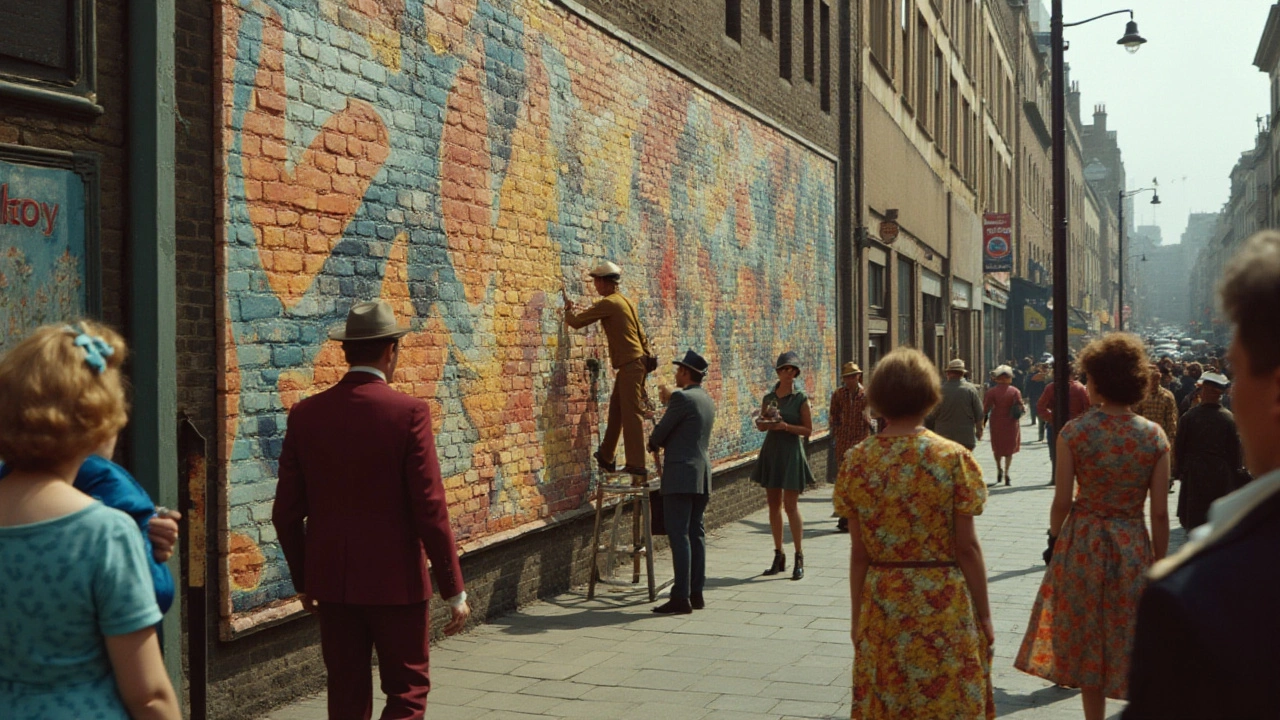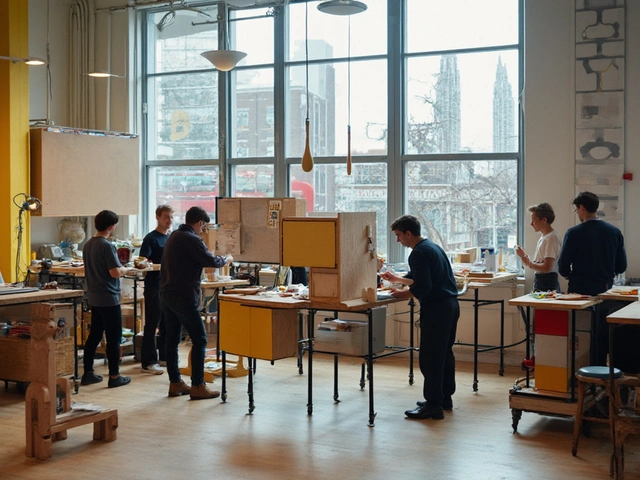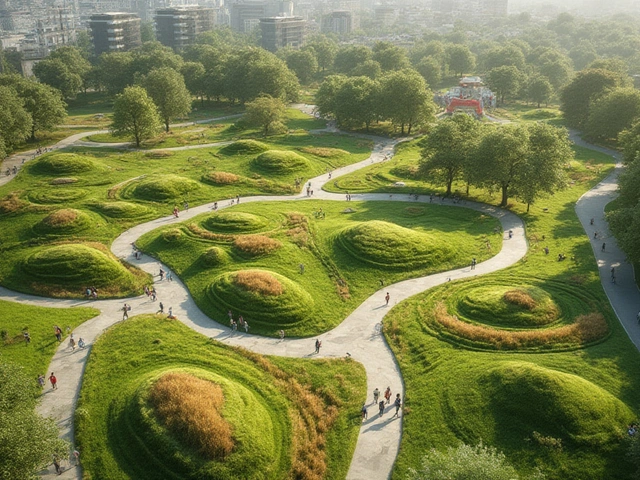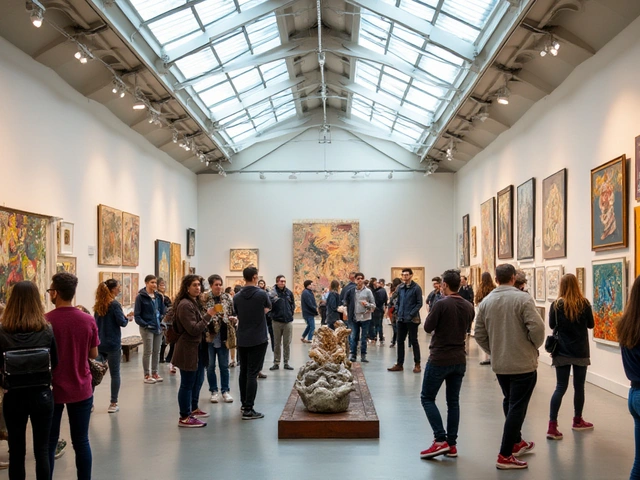The avant-garde movement, an emblem of innovation and daring, has been reshaping the creative landscape since its inception. Marked by its audacity to challenge conventions and embrace the unorthodox, it has significantly influenced various forms of art and culture.
Born out of a desire to transcend the limitations of traditional artistic expression, the avant-garde emerged as a powerful force that resonated across different periods and mediums. Its evolution paints a fascinating picture of rebellion, experimentation, and resilience amid changing socio-political landscapes.
From the daring strokes of early 20th-century painters to the radical notes of musical innovators and the thought-provoking visions of modern-day creators, the spirit of avant-garde has continually sought to provoke, inspire, and lead the way into uncharted territories.
- Origins of Avant-Garde
- Key Figures and Movements
- Impact on Arts and Culture
- Contemporary Avant-Garde
Origins of Avant-Garde
The roots of the avant-garde movement delve deep into the tumultuous social and political shifts of the late 19th and early 20th centuries. This period in history was marked by rapid industrialization, significant political upheaval, and a feeling of discontent with established norms. Artists and thinkers, feeling constrained by traditional structures, began to seek new ways to express the profound changes happening around them. It gave rise to a movement that was as revolutionary in its spirit as it was visionary in its outlook, testing the boundaries of art, music, and literature. They believed that art should not only reflect the world but actively participate in its transformation.
This transformative wave was notably influenced by the technological advancements of the era, which altered perceptions of space, time, and human capability. The invention of the camera challenged the role of realistic painting, while the development of film created new storytelling possibilities. Artists were no longer required to reproduce reality with accuracy but were freed to capture the mood and essence of life. From the street cafes of Paris to the burgeoning cultural centers of New York and Berlin, the avant-garde thrived, sharing ideas that would soon ripple through every corner of creative expression.
As Walter Benjamin observed, "Art in the age of mechanical reproduction loses its indexical connection to reality, making its aura vanish." This was a critical insight for avant-garde thinkers who embraced the detachment of art from traditional representational roles.
Often characterized by its focus on shock value and provocative subject matter, the early avant-garde sought to dismantle what it saw as the ossified status quo. Movements such as Fauvism, Cubism, and Futurism emerged as pioneers, each embracing the core avant-garde principles of innovation and non-conformity. Whether through the chaotic lines of a Dadaist collage or the jarring compositions of Russian Constructivists, these artists looked to remix reality from an introspective perspective. Their works prompt observers to question, reinterpret, and reconstruct the way they experience the world. This was art as an active challenger, shaking audiences from passive consumption into engaged dialogue.
The period generated a host of notable figures passionately committed to driving cultural shifts. Picasso’s Cubism was not only an assault on perception but also a dialogue with perceptual relativity. Similarly, Duchamp’s ready-mades provoked debate on art's definition, challenging institutional voices and questioning conventional validations of art and artists. By directly confronting their subjects and audiences alike, these radical visions played a crucial role in the blossoming of modernism while laying a foundation future avant-garde movements would expand upon. The avant-garde insisted that where society grows passive, art must act energetically, and this vibrancy remains influential today.

Key Figures and Movements
The story of avant-garde art is enriched by the remarkable individuals and movements that dared to dream beyond the norm. One cannot discuss the avant-garde without acknowledging the significant role played by artists like Pablo Picasso and Wassily Kandinsky. Picasso, with his revolutionary approach to form and structure, helped birth the Cubist movement, redefining the perception of space and composition in art. His work, especially the iconic 'Les Demoiselles d'Avignon', shattered traditional perspectives and invited audiences to see the world through a fragmented lens. Kandinsky, on the other hand, is often celebrated as one of the pioneers of abstract art. His belief that art could evoke emotions akin to music led him to create compositions that danced with vibrant colors and erratic forms, influencing countless artists to prioritize the expression of emotion over visual representation.
As the 20th century progressed, the avant-garde found new champions in the Dadaists and Surrealists. Dada emerged as a response to the horrors of World War I, championing nonsense and absurdity as critiques of the societal structures that led to such destruction. Figures like Marcel Duchamp, with his ready-mades, questioned the very nature of art and its creation. In Surrealism, spearheaded by Salvador Dalí and André Breton, dreams, and the unconscious became the playgrounds of artistic exploration. These artists created worlds where the illogical thrived, laying bare the folly of rationalism and control.
Fast forward to the latter half of the century, and the avant-garde continued to evolve with the Fluxus movement and the rise of conceptual art. Fluxus, with its emphasis on blending different artistic disciplines, saw figures like Yoko Ono and Nam June Paik play pivotal roles in pushing the boundaries of what art could be. They blurred the lines between art forms, introducing elements of chance and the everyday into their work. At the same time, conceptual artists like Sol LeWitt emphasized ideas over traditional aesthetics, challenging the viewer to engage with the inherent concepts and frameworks presented in their work.
The impact of these avant-garde movements extended far beyond their artistic circles, influencing cultural dialogues and shifting societal perceptions. These artists raised fundamental questions about authorship, authenticity, and the function of art in everyday life. They dared society to confront taboos, embrace change, and imagine the world through a lens that was unafraid of the unconventional. As a result, avant-garde art became a catalyst for broader discussions on freedom, identity, and the endless possibilities of human creativity.
One of the enduring legacies of these figures and movements is their influence on contemporary art. Many of today's artists draw inspiration from the bold experiments of their avant-garde predecessors, blending technology, performance, and activism into their work. This legacy reminds us that at its heart, avant-garde art is about challenging the status quo and continuously seeking new avenues of expression, ensuring that art remains a dynamic and evolving conversation.
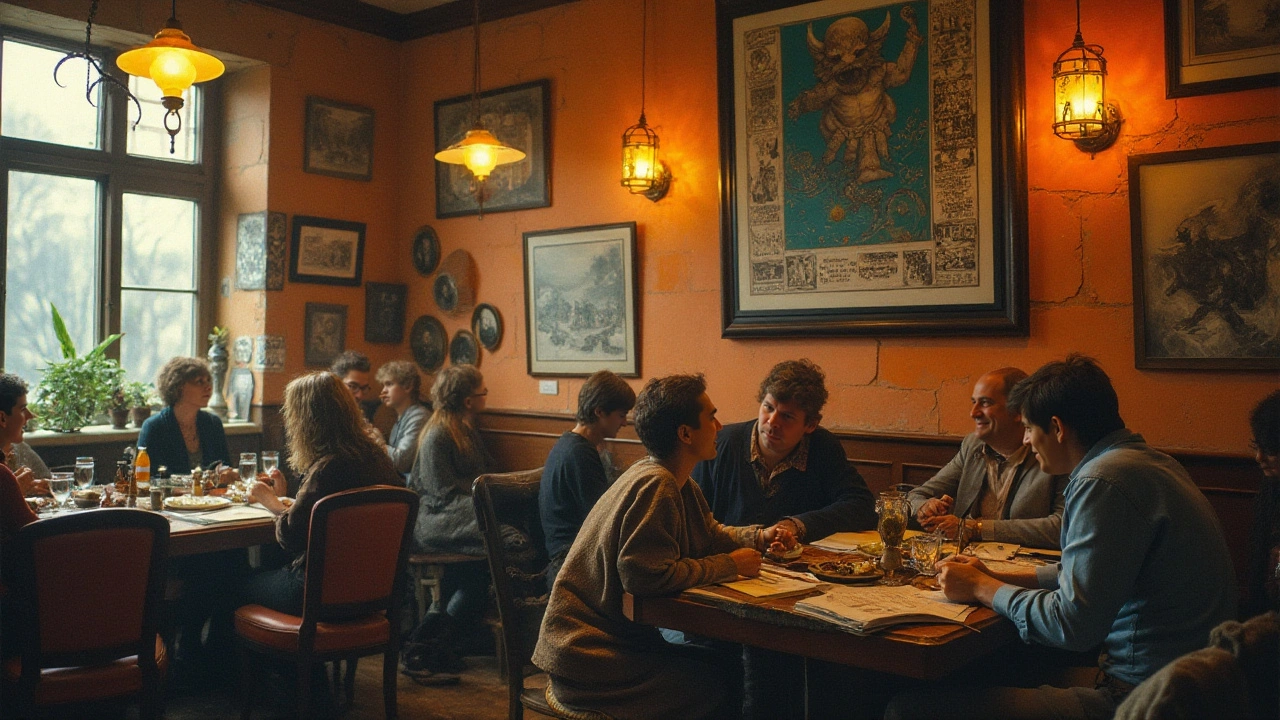
Impact on Arts and Culture
The avant-garde movement has left an indelible mark on the world of arts and culture, fostering a spirit of experimentation and boundary-pushing that has echoed through generations. Early pioneers broke away from traditional methods, encouraging artists to redefine what art could be. This movement embraced a radical shift in understanding art as a dynamic and evolving form, promoting the idea that art should be an experience rather than a static object. As artists sought to capture the changing spirit of the times, they often turned to their surroundings for inspiration, resulting in works that both challenged and reflected the societies in which they lived.
Over the decades, creative expression within the avant-garde spectrum has influenced everything from architecture to literature. Whether through the dissonant yet compelling sounds of atonal music or the abstract forms of modernist design, avant-garde effectively dismantled the barriers between disciplines. Its influence often spotlighted cultural and political themes, inviting audiences to engage in social discourse. The impact on film was also notable, as directors experimented with new techniques that defied conventional storytelling, altering viewers' perceptions of narrative and reality.
One might consider the words of Pablo Picasso, who once said, "Every act of creation is first an act of destruction." Through this lens, avant-garde artists saw destruction not as a negative but as a necessary step in creation. By dissolving traditional norms, innovation thrives, thus opening new avenues for dialogue and provoking thought. This departure from the norm came into play most starkly during the interwar years when artists and intellectuals sought answers to the human condition, fueled by existential reflection and the scars of conflict.
In understanding avant-garde's scope, it's beneficial to examine some specific art movements that blossomed under its influence. The Dada movement, known for its art that subverted established aesthetic values, provided a sense of nihilism that resonated during the turbulent 1920s. Similarly, Surrealism's dreamlike quality invited audiences to explore the subconscious, rendering the fantastical and bizarre accessible. Each of these movements, anchored deeply within the avant-garde ethos, urged society to rethink reality's possibilities, demonstrating art and cultural practices as evolving entities, not fixed doctrines.
The longing for artistic liberation resonated far beyond the realms of galleries and theaters. Its tendrils stretched into the worlds of fashion and popular culture. When Andy Warhol's work blurred the lines between commercial art and fine art, he reflected the essence of the avant-garde challenge to traditional art values. As an extension, the rise of avant-garde often corresponded with societal shifts, sparking debate and ushering in cultural revolutions that would shape perspectives for years to come.
Today, the avant-garde persists as a reminder that art's role in society is never static. It thrives on the edges, impacting not only how art is created but also how it is perceived and consumed. Emerging digital artists continue to champion this avant-garde legacy, harnessing technology to create art that is interactive and immersive. This enduring spirit of avant-garde encourages creators to dream beyond their mediums, transforming challenges into opportunities and embracing an ever-evolving dialogue with audiences worldwide.

Contemporary Avant-Garde
The essence of the avant-garde movement continues to thrive in our contemporary art scenes, where creative expression still flourishes unrestricted. Today, it is characterized by technological integration and digital innovation that transform the landscape of traditional media. Modern creators leverage technology in novel ways, producing works that blur the lines between reality and simulation. This digital evolution has paved the way for innovations like virtual reality art exhibitions and NFT (Non-Fungible Token) artworks, where the content is not only visually engaging but also technologically revolutionary. The avant-garde spirit pushes these boundaries, transforming how audiences experience art, making it more interactive and inclusive.
Artists of the contemporary avant-garde are not confined to traditional art forms; they frequently incorporate elements of performance, social commentary, and activism in their work. This approach is evident in projects like those by Marina Abramović, whose provocative works explore human psychology and performance art, inviting the audience into introspective journeys. Meanwhile, younger artists harness social media as a canvas, debating issues from climate change to social justice, ensuring that art remains a tool for societal reflection and change.
The role of the artist in today's world is to observe and provoke, and the avant-garde is about seeing how far that provocation can go," says Arthur C. Danto, bringing insight into how this movement remains a significant cultural force.
Experimentation is at the heart of contemporary avant-garde, as artists continually seek to rediscover the unexplored and question the status quo. The use of AI in artworks, for example, demonstrates how avant-garde artists reach beyond traditional forms, giving rise to debates about authenticity and originality in art. Digital installations, interactive soundscapes, and even scientifically-driven art challenge audiences and demonstrate how far the field has evolved. Performances by groups like The Wooster Group use multimedia, theater, and video in unique blends that redefine the very structure of storytelling. Creative expression takes myriad forms, but each iteration holds true to avant-garde's original ethos of pushing boundaries and defying expectations.
The impact of contemporary avant-garde spans beyond just galleries and performance spaces. As AI-generated music pushes sonic boundaries, fashion designers focus on sustainability and environmental consciousness, embracing the avant-garde philosophy in ways transactional to culture. Designers like Iris van Herpen, merging technology with haute couture, turn the runway into a space for avant-garde innovation, with collections that question the future of body and fabric interaction through complex designs. This interdisciplinary nature reflects avant-garde's persistence, emphasizing the movement's adaptability and continuous relevance in ever-evolving art forms.

